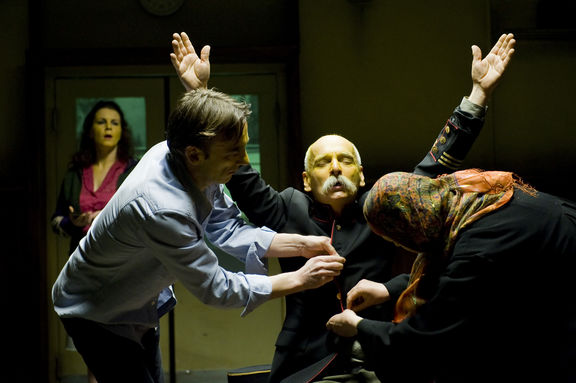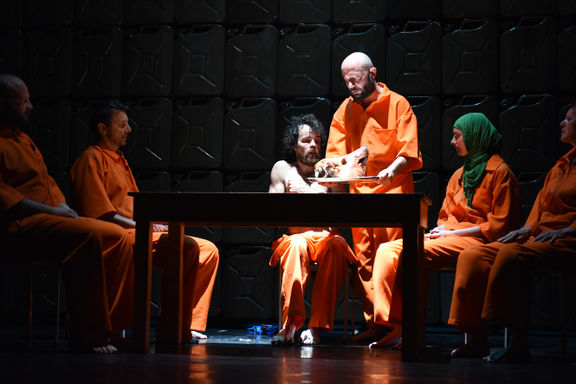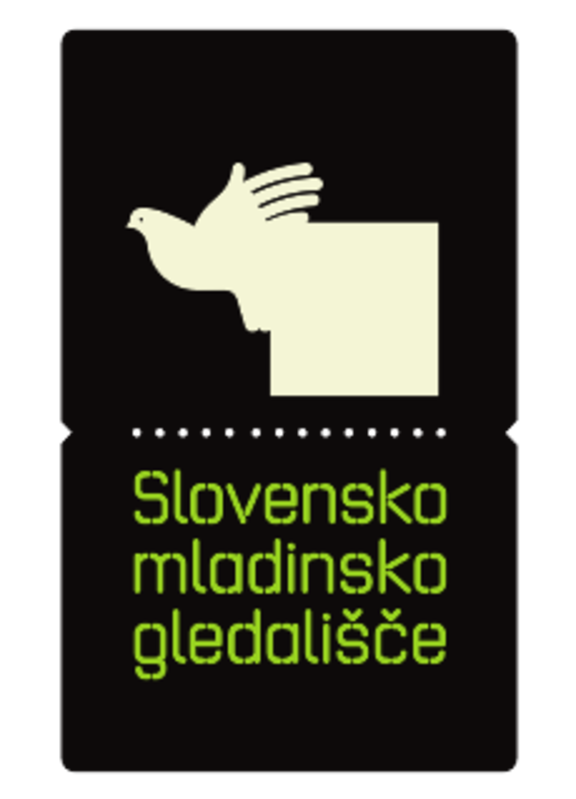Mladinsko Theatre
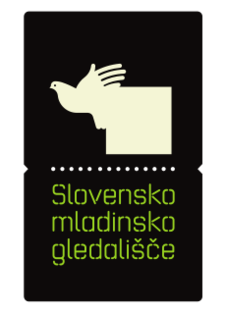
-
3 Jul 2025
GermanyBerlinGorkiInkubator, the play written by actors and collaborators, directed by Oliver Frljić.
Produced by: Mladinsko Theatre. -
to
15 Nov 2024
16 Nov 2024
LuxembourgLuxembourgThéâtre National du LuxembourgTwo performances of "Saint Joan of the Stockyards - Sveta Ivana Klavniška" by Bertold Brecht, with original live music by Laibach, produced by Emilia Romagna Teatro ERT, Mladinsko Theatre, in collaboration with Cankarjev dom, Cultural and Congress Centre, Théâtre National du Luxembourg, andErosAntEros – POLIS Teatro Festival, Teatro Stabile di Bolzano.
-
1 Oct 2024
CroatiaZagrebGDK GavellaWorld Theatre Festival Zagreb"Solo", an improvisation project by Nina Rajić Kranjac, Nataša Keser, Benjamin Krnetić, and Marko Mandić. Co-production by Maska Institute and Mladinsko Theatre.
-
to
27 Sep 2024
28 Sep 2024
SerbiaBelgradeBitef TheatreBitef FestivalA series of lecture-peformances about sexual pleasure of women titled "Sex Education II - Struggle". The fifth and last part reconstructs the struggle for reproductive rights in Yugoslavia. Written by Tjaša Črnigoj, Sendi Bakotić, Vanda Velagić, Tijana Todorović and Lene Lekše. Co-produced by Mladinsko Theatre, Maska Institute and City of Women.
-
25 May 2024
CroatiaRijekaExportdrvoZOOM festival"Sex Education II: Fight - Spolna vzgoja II: Borba" is a lecture-performance about the fight for reproductive rights in Yugoslavia. Directed by Tjaša Črnigoj and coproduced by Mladinsko Theatre, Maska Institute, and City of Women.
-
24 Apr 2024
ItalyRavennaTeatro AlighieriA performance of "Saint Joan of the Stockyards - Sveta Ivana Klavniška", a Slovene production of Bertold Brecht's play by Mladinsko Theatre in collaboration with Cankarjev dom. Featuring music by Laibach and cast members from Slovenia, Italy, and Luxembourg. Coproduced by Emilia Romagna Teatro Bologna/Teatro Nazionale, TNL – Théâtre National du Luxembourg, ErosAntEros – POLIS Teatro Festival, and Teatro Stabile di Bolzano.
-
to
18 Apr 2024
21 Apr 2024
ItalyBolognaArena del Sole ERTFour performances of "Saint Joan of the Stockyards - Sveta Ivana Klavniška", a Slovene production of Bertold Brecht's play by Mladinsko Theatre in collaboration with Cankarjev dom. Featuring music by Laibach and cast members from Slovenia, Italy, and Luxembourg. Coproduced by Emilia Romagna Teatro Bologna/Teatro Nazionale, TNL – Théâtre National du Luxembourg, ErosAntEros – POLIS Teatro Festival, and Teatro Stabile di Bolzano. The play premieres on the 18th of April.
-
to
14 Apr 2024
16 Apr 2024
GermanyBerlinHAU3 Hebbel am UferA performance of "Sex Education II: FIGHT - Spolna vzgoja II: Borba", a final part of a cycle of performative lectures on women's sexual pleasure, reconstructing the struggle for reproductive freedom in Yugoslavia. Directed by Tjaša Črnigoj and coproduced by Mladinsko Theatre, Maska Institute, and City of Women.
-
21 Dec 2023
ItalyTriesteSlovene Permanent Theatre in Trieste"6", a Slovenian play. A coproduction of Maska Institute and Mladinsko Theatre.
-
25 Nov 2023
ItalyTriesteSlovene Permanent Theatre in TriesteA guest performance of co-production "Puss in Boots" by Mladinsko Theatre and Koper Theatre.
-
16 Nov 2023
GermanyBerlinDas Maxim Gorki TheaterBerliner Herbstsalon"Maša za Jugoslavijo - Mass for Yugoslavia", an international co-production featuring Mladinsko Theatre, HNK Ivana pl. Zajca Rijeka, Bitef Teatar, MOT Skopje.
-
30 Jun 2023
CroatiaZagrebZagrebački plesni centarFestival Perforacije ZagrebPerformance Crises directed by Žiga Divjak and produced by Mladinsko Theatre and The New Post Office in co-production with Maska Institute, Bitef (Belgrade/Serbia) and the Domino Association (Zagreb/Croatia). A part of the ACT project - Art, Climate, Transition, a European cooperation project.
-
26 May 2023
CroatiaRijekaFestival ZoomCrises directed by Žiga Divjak produced by Mladinsko Theatre, a part of the European project ACT: Art, Climate, Transition
-
11 May 2023
AustriaBleiburg/PliberkPaloma produced by Mladinsko Theatre, AGRFT, KUD Krik
-
7 May 2023
ItalyRavennaTeatro RossiFestival POLIS TeatroGejm directed by Žiga Divjak, produced by Mladinsko Theatre, Maska Institute
-
26 Mar 2023
ItalyTrieste/TrstLarge Hall, Slovene Permanent Theatre in TriestePaloma produced by Mladinsko Theatre, AGRFT, KUD Krik
-
to
11 Mar 2023
12 Mar 2023
GermanyBerlinDeutsches TheaterRadar Ost FestivalCrises directed by Žiga Divjak produced by Mladinsko Theatre, a part of the European project ACT: Art, Climate, Transition
-
to
11 Mar 2023
12 Mar 2023
GermanyBerlinDeutsches TheaterRADAR OSTPerformance Crises directed by Žiga Divjak and produced by Mladinsko Theatre and The New Post Office in co-production with Maska Institute, Bitef (Belgrade/Serbia) and the Domino Association (Zagreb/Croatia). A part of the ACT project - Art, Climate, Transition, a European cooperation project. Related: Embassy of the Republic of Slovenia in Berlin, SKICA Berlin, Slovenian Cultural Centre
-
26 Sep 2021
AustriaGrazOrpheumSteirischer HerbstThe Way Out edition of the festival presents also the Žiga Divjak's performance Heat, coproduced by Mladinsko Theatre and the festival
-
6 Jun 2021
CroatiaZagrebKerempuh Satirical TheatreFadil Hadžić Satire DaysArt is a Cupboard after Daniil Harms, directed by Ivan Peternelj, produced by Mladinsko Theatre
-
to
11 Mar 2021
21 Mar 2021
SerbiaNišSrbsko narodno gledališče NišTeatar na raskršću FestivalBaal, a drama piece written by Andrej Rozman Roza (based on motives by B. Brecht), directed by Vito Taufer, produced by Mladinsko Theatre
-
to
12 Mar 2020
22 Mar 2020
GermanyNürnbergStaatstheater NürnbergThe German premiere of Stop Me, directed by Eva Nina Lampič and co-produced by Mladinsko Theatre and Staatstheater Nürnberg,
-
to
28 Nov 2019
29 Nov 2019
SerbiaSuboticaJadran Stage, Kosztolányi Dezső TheatreDesiré Central StationThe performances Hero 3.0 - More Than Words by Uroš Kaurin and Vito Weis, produced by Moment Arts and Culture Association; The Opposite of Things, directed by Boris Nikitin and produced by Mladinsko Theatre,
-
to
11 Oct 2019
23 Oct 2019
CroatiaZagrebGavella Drama TheatreGavella EveningsTheatre performances The Damned, produced by the Slovene National Theatre Maribor; and Ball, directed by Vito Taufer and produced by Mladinsko Theatre, and the musical The Adams Family, directed by Aleksandar Popovski and produced by Ljubljana City Theatre (MGL),
-
to
13 Sep 2019
14 Sep 2019
North MacedoniaSkopjeNOB Small StageMOT International Theatre FestivalThe performance The Little Wire Girl, directed by Marjan Nečak and produced by the Slovene National Theatre Drama Ljubljana, and no title yet by Simona Semenič, directed by Tomi Janežič and produced by Mladinsko Theatre,
-
9 Aug 2019
HungarySzegedInternational Meeting of Free Theatres ThealterThe theatre performance 6, directed by Žiga Divjak and produced by Maska Institute and Mladinsko Theatre,
-
to
6 Jul 2019
7 Jul 2019
MontenegroBar, PodgoricaCulture Centre Summer StageBarski ljetopis FestivalOur Violence and Your Violence, directed by Oliver Frljić and co-produced by the Mladinsko Theatre,
-
21 May 2019
RomaniaTimișoaraHungarian Theater Main HallEuroregional Theatre Festival TESZTno title yet by Simona Semenič, directed by Tomi Janežič and produced by Mladinsko Theatre,
-
to
15 Mar 2019
17 Mar 2020
SerbiaNišNational TheatreTheatre at a CrossroadsThe performance Conversations About Love, an original project by Jernej Lorenci and the team, co-produced by the Slovene National Theatre Drama Ljubljana, and Baal, directed by Vito Taufer and produced by Mladinsko Theatre,
-
to
25 Nov 2018
1 Dec 2018
SerbiaSuboticaKosztolányi Dezső TheatreDesiré Central StationThe performances The Idiots, directed by Nina Rajić Kranjac and produced by Mladinsko Theatre; Hero 2.0 by Uroš Kaurin and Vito Weis, produced by Moment Arts and Culture Association and En-Knap Productions; 365 Falls by Via Negativa; and a concert by Laibach,
-
to
25 Oct 2018
26 Oct 2018
GermanyBerlinMaxim Gorki TheatreWar or Peace - Crossroads of History 1918 / 2018Damned Be the Traitor of His Homeland!, produced by Mladinsko Theatre, with artist talk with director Oliver Frljić
-
to
24 Oct 2018
28 Oct 2018
CroatiaRijekaFilodrammaticaZOOM FestivalThe performative installation Red Web by Olja Grubić and Živa Petrič, co-produced by Aksioma Institute and City of Women Association for Promotion of Women in Culture; the exhibition Rule 34 by Iza Pavlina, produced by Aksioma Institute; and the theatre performance 6, directed by Žiga Divjak and co-produced by Mladinsko Theatre and Maska Institute,
-
to
18 Oct 2018
20 Oct 2018
MexicoGuanajuatoAuditorio del Estado, Teatro PrincipalCervantino International FestivalThe theatre performance Damned Be the Traitor of His Homeland!, directed by Oliver Frljić and produced by Mladinsko Theatre, and the dance performance Stabat Mater/The Rite of Spring, choreographed by Edward Clug and produced by the Slovene National Theatre Maribor,
-
to
21 Sep 2018
25 Sep 2018
North MacedoniaSkopjeYouth Cultural CenterMOT International Theatre FestivalLars von Trier'sThe Idiots, directed by Nina Rajić Kranjac and produced by Mladinsko Theatre, and The First Altruistic Performance by Marko Bulc, produced by Bunker Institute,
-
13 Sep 2018
SerbiaBelgradeBelgrade International Theatre Festival BITEFOdilo. Obscuration. Oratorio. by Dragan Živadinov and Peter Mlakar, produced by Mladinsko Theatre and Kino Šiška Centre for Urban Culture,
-
to
21 Jun 2018
23 Jun 2018
PolandWarsawKomuna// WarszawaThe Polish premiere of National Reconciliation: A Show for Tourists, a co-production of the Mladinsko Theatre and Komuna// Warszawa,
-
26 May 2018
Czech RepublicBrnoNational Theatre BrnoTheatre WorldOur Violence and Your Violence, directed by Oliver Frljić and co-produced by the Mladinsko Theatre,
-
to
27 Mar 2018
31 Mar 2018
ColombiaBogotáLeón de Greif TheatreBogotá Latin American Theatre FestivalOur Violence and Your Violence directed by Oliver Frljić and produced by the Mladinsko Theatre,
-
to
19 Nov 2017
27 Nov 2017
SerbiaSuboticaJadran Stage, Kosztolányi Dezső TheatreDesiré Central Station FestivalThe Ninth - The Anthropological Machine powered by Beethoven, a performance produced by Via Negativa, and Simona Semenič's we, european corpses, directed by Sebastijan Horvat and produced by Mladinsko Theatre,
-
to
17 Oct 2017
18 Oct 2017
CroatiaRijekaCroatian National Theatre Ivan pl. ZajcOur Violence and Your Violence directed by Oliver Frljić and produced by the Mladinsko Theatre,
-
28 Sep 2017
North MacedoniaSkopjeYouth Cultural CentreInternational Theatre Festival MOTOur Violence and Your Violence, produced by the Mladinsko Theatre
-
to
17 Jun 2017
18 Jun 2017
PolandPoznańPoznań International Fair MTP1Malta Festival PoznańThe Republic of Slovenia, produced by the Mladinsko Theatre and Maska Institute, My Name is Janez Janša, a film screening and the 350 Janez Janša Bottles project presentation, Bojana Kunst's lecture and book presentation (Artist at Work) and a concert by Laibach
-
13 May 2017
CroatiaRijekaCroatian National Theatre Ivan pl. ZajcOur Violence and Your Violence, produced by the Mladinsko Theatre,
-
to
4 May 2017
5 May 2017
ItalyTrieste/TrstSlovene Permanent Theatre in TriesteDraga Potočnjak’s All the Heroes Counted, directed by Branko Potočan and produced by the Mladinsko Theatre,
-
to
28 Apr 2017
29 Apr 2017
GermanyHamburgKampnagelKRASS Kultur Crash FestivalOur Violence and Your Violence, produced by the Mladinsko Theatre,
-
24 Apr 2017
CroatiaSplitCroatian National Theatre SplitMarulić Days FestivalOur Violence and Your Violence, produced by the Mladinsko Theatre,
-
22 Apr 2017
CroatiaRijekaCroatian National Theatre Ivan pl. ZajcOur Violence and Your Violence, produced by the Mladinsko Theatre,
-
17 Mar 2017
Czech RepublicPragueStudio HrdinůBazaar Theatre and Dance FestivalDamned be the traitor of his homeland!, directed by Oliver Frljić and produced by Mladinsko Theatre,
-
10 Mar 2017
ItalyGorizia/GoricaKulturni center Lojze BratužJosip Vandot's Kekec, produced by Mladinsko Theatre,
-
9 Dec 2016
PolandKrakówLudowy TheatreDivine Comedy International Theatre FestivalPrincess Dramas, produced by the Mladinsko Theatre
The theatre regularly tours worldwide and was awarded the title European Ambassador of Culture by European Commission in 2008. Through its current projects the theatre is dealing with the 'symptomisation' of the society, showing the detected symptoms via appropriate performative procedures. For this reason, public space becomes a performance space as well.
History
Mladinsko Theatre was established in 1955 as the first professional theatre for children and youth in Slovenia. Although Mladinsko Theatre's productions of its first decade aimed at younger audiences with the stagings of adaptations of classical as well as domestic youth literature, the theatre's first director Balbina Battelino Baranovič (who established in 1955 also the first experimental theatre in Slovenia, introducing the theatre-in-the-round principle) succeeded to professionalise the theatre's activities and also include into the theatre's programme productions intended for a wider audience. Thus in the 1960s and 70s, Mladinsko collaborated with distinguished Slovene directors, such as Mile Korun, Dušan Jovanović, etc.During this period its productions and actors were gaining wide recognition, exemplified also by several prominent awards. For example, Mile Korun's staging of Aurand Harris's Androcles and the Lion [Androkles in lev] (1973) brought to the theatre the first Borštnik Award for best performance in 1973.
In the 1980s Mladinsko Theatre initiated a unique interdisciplinary stage research and its productions (Victims of the Bang Bang Fashion [Žrtve mode bum-bum] (1975), Missa in a minor [Maša v a molu] (1980), The Class Enemy [Razredni sovražnik] (1982), Romeo and Juliet – Commentaries [Romeo in Julija – komentarji] (1983), The Persians [Peržani] (1980), Anna [Ana] (1984), etc.) were widely acclaimed during the 1980s for their political engagement as well as for their innovative approach to mise-en-scène. The performance Victims of the Bang Bang Fashion, directed by Dušan Jovanović, who was the artistic director of Mladinsko Theatre in the 1980s, put Mladinsko Theatre on the international map of experimental theatres.
However, the complete aesthetic break was brought about with the performance Missa in A Minor, directed by Ljubiša Ristić, who staged an original montage of Danilo Kiš's text A Tomb for Boris Davidovich with fragments from political texts of Lenin, Trotsky, Proudhon, Bakunin, etc., thus departing from the traditional relation between the literary text and theatre. This gesture constituted a new understanding of theatre and proved to be decisive for the general orientation of Mladinsko Theatre in the future.
In 2015 the Mladinsko Theatre produced with the HNK Ivana pl Zajca in Rijeka,the BITEF in Belgrade and the MOT in Skopje the Ristić Complex performance directed by Oliver Frljić. on the occasion of the theatre's 60th anniversary, it aimed at recontextualisation of the performances by controversial director Ljubiša Ristić in the light of art and ideology.
By the end of the 1980s, Mladinsko Theatre production took a turn from making subversive, director-oriented theatre to making theatre by deconstructing modernist theatre traditions, a transition that was most notably epitomised by Vito Taufer's dramatisation of Lewis Caroll's Alice in Wonderland [Alica v čudežni deželi] (1986), which combined the apparently incompatible: childlike sensibility and daredevil theatre experimentation.
The production of the 1990s was marked by spectacle and intimacy, the aesthetic radicality approached the post-modernist theatre of images, while Mladinsko Theatre continued to work with stage directors whose dialogue with dramatic texts and personal poetics was inventive and avant-garde (Matjaž Pograjc, Vito Taufer). Another turn in Mladinsko Theatre production was introduced at the turn of the 21st century by the youngest generation of directors (Diego de Brea, Tomi Janežič, Jernej Lorenci), who again brought to the focus the dramatic text. In its productions, Mladinsko Theatre continues to thematise the universal paradoxes of civilisation, its programme being founded in problematisations of new times and spaces. By moving the experiment from the level of artistic expression into the field of civic action, Mladinsko is one of those exceptional theatre organisms that with their objectives often cause important effects in non-artistic discourse as well.
In 2006 Mladinsko Theatre celebrated its 50th anniversary, publishing an illustrated book about its history, entitled Has the Future Already Arrived? [Ali je prihodnost že prišla] (in English and in Slovenian editions).
Youth programme
Mladinsko in English means "youth". However, although the theatre has outgrown its primary role while keeping the name, Mladinsko Theatre has always included performances for children in its programme. These productions have met with great success and have toured extensively in Slovenia and abroad, winning also a number of Slovene and international awards. Vito Taufer's Alice in Wonderland [Alica v čudežni deželi] (1986) received the Golden Laurel Wreath Award at the 1988 MESS Festival in Sarajevo, his staging of Pippi [Pika] (1998) received the Silver Laurel Wreath Award for best children performance at the same festival in 2008 (after 10 strong years in the repertory). Pippi, based on Astrid Lindgren's beloved Pippi Longstocking character, also won three Little Golden Stick Awards at the Golden Stick Festival in 1999 for Best Performance, Best Actress (to Janja Majzelj) and Special Award of the Jury (to Ivan Rupnik).
Besides stagings of classical children stories, such as Snow White and Seven Dwarfs [Sneguljčica in sedem palčkov] (2003), which was selected as the best performance of 2005 in the Bologna-based Teatri di Vita, and Kekec (2004), based on the Slovene story about the adventurous, courageous, and kind shepherd Kekec, or Kuzma the Gremlin Gets an Award [Škrat Kuzma dobi nagrado], based on a witty story by the legendary Slovene poet, writer and children's writer Svetlana Makarovič. Mladinsko also stages performances for young adult audiences, for example Mark Ravenhill's Totally Over You [Kok ti men zdej dol visiš] (2007).
Since 2009, Mladinsko co-organises the Ljubljana-based festival of children education in culture and the arts called Bobri (in English: Beavers), featuring a number of theatre and music performances, a film programme, and workshops for children.
Programme
Mladinsko Theatre prepares around five new productions each year, some of them in co-operation with guest directors and in co-production with independent producers. Mladinsko's productions include adaptations of classical and contemporary texts (from Shakespeare's The Tempest [Vihar] (2008) to Tena Štivičić's Fragile! (2005), Sarah Kane's Blasted [Razdejani] (2008) and Crave [Sla] (2009) or Elfriede Jelinek's Princess Dramas [Drame princes] (2015), as well as projects by guest directors such as Dragan Živadinov or a puppetry author Silvan Omerzu, and directing projects by actors of Mladinsko Ivan Peternelj, Neda Rusjan Bric and Janja Majzelj.
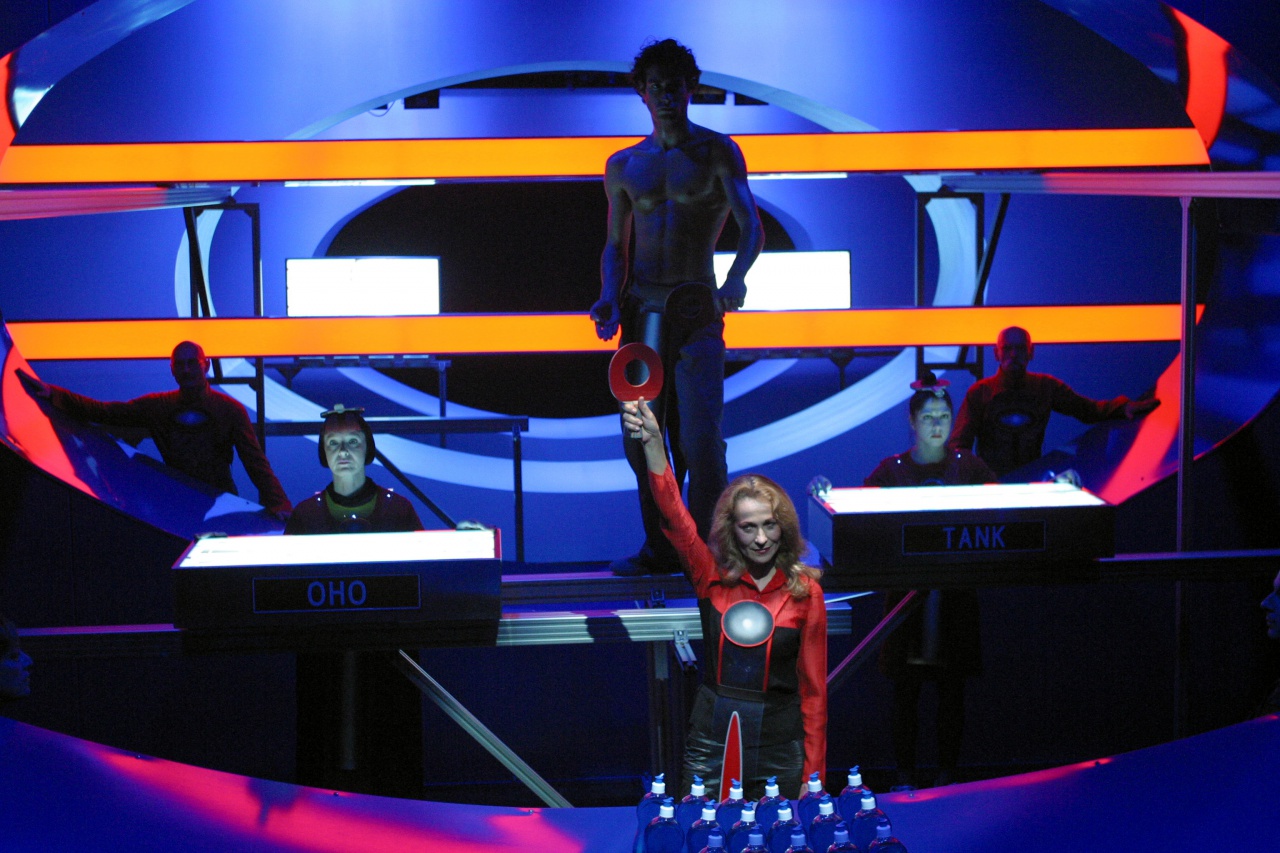 Supremat, directed by Dragan Živadinov, Mladinsko Theatre, 2002
Supremat, directed by Dragan Živadinov, Mladinsko Theatre, 2002
The theatre is offering 5 season ticket programmes, among them also the Piran Bay Season Ticket aimed at offering an international programme of performances in cooperation with the Slovene Permanent Theatre in Trieste and the The Croatian National Theatre Ivan Zajc from Rijeka, Croatia.
Since 2007 the Mladinsko Theatre runs its own festival called Mladinsko Showcase: an overview of Mladinsko Theatre productions.
International cooperation
Mladinsko Theatre regularly makes guest performances at international festivals worldwide (Nancy, Hamburg, Belgrade, London, Moscow, Essen, Cardiff, Lisbon, Madrid, Bogota, New York) and also hosts selected performances from other countries. Its most acclaimed performances have included Alice in Wonderland, Drama Observatory Zenith, Scheherezade, Roberto Zucco, Miss Juliet, Silence Silence Silence, Queen Margot, Fragile!, The Epic of Gilgamesh, Crime and Punishment, Damned Be the Traitor of His Homeland!, Amado mio, The Republic of Slovenia and Our Violence and Your Violence.
Venues
The Mladinsko Theatre is found in Ljubljana's Bežigrad neighbourhood, occupying a part of Slovene architect Jože Plečnik's unfinished Akademski kolegij which was intended to be the Baraga Seminary. The theatre incorporates two venues – the Upper Hall (Zgornja dvorana) and the Lower Hall (Spodnja dvorana), however, some of Mladinsko performances are also held at the Old Post building in immediate vicinity of the theatre.
Upper Hall (Zgornja dvorana)
- Type of venue: multi-purpose hall
- main use: theatre, puppetry, film, music
- seating: 275 seats total
- proscenium opening: 8m W x 4.4m H
- performing area: 9m W x 12m D x 4.4m H flat wooden stage floor, suitable for dance
- forestage: 2m D
- wing spaces: 2m W SR, 2m W SL
- soft hangings: black house curtain, black tabs, legs and borders
- lighting: Euro system lighting desk, 500-1000W beamers
- sound: Euro system mixer, power amplifiers and loudspeakers
- stage equipment: 35mm projection equipment, cinema screen, technical staff available
- backstage: dressing rooms for 40 persons total
- climate control: air-conditioning
- availability: available for hire
Lower Hall (Spodnja dvorana)
- Type of venue: multi-purpose hall (non-conventional space)
- main use: theatre, puppetry, film, music
- seating: 103 seats total
- performing area: 8m W x 25m D x 3.15-4.47m H, flat stage floor suitable for dance
- wing spaces: 2m W SR, 2m W SL
- soft hangings: black house curtain, black tabs, legs and borders
- lighting: Euro system lighting desk, 500-1000W beamers
- sound: Euro system mixer, power amplifiers and loudspeakers
- stage equipment: 35mm projection equipment, cinema screen, technical staff available
- backstage: dressing rooms for 20 persons total
- climate control: air-conditioning
- availability: available for hire
See also
External links
- Mladinsko Theatre website
- Mladinsko Theatre performances - with many performances video clips by ProdokTV
- Mladinsko Theatre architecture - the history of the Baraga Seminary building conceived by Jože Plečnik from the Theatre Architecture in Central Europe web database
- Mladinsko Theatre on Wikipedia (in Slovenian)
- Castration Machines on Wikipedia (A book which discusses many productions of Mladinsko Theatre, in English)
International cooperation
Gallery
- Theatre
- Producers
- Theatre producers
- Festival organisers
- Theatre festival organisers
- Venues
- Theatre houses
- Theatre venues
- Theatre archives
- Maribor, European Capital of Culture 2012
- EU funding of Slovene organisations (Culture and MEDIA Programmes)
- EU Culture funding recipient
- Municipal cultural institutions
- Theatre & Dance
- Theatre archives and libraries
- Theatre festival and event organisers


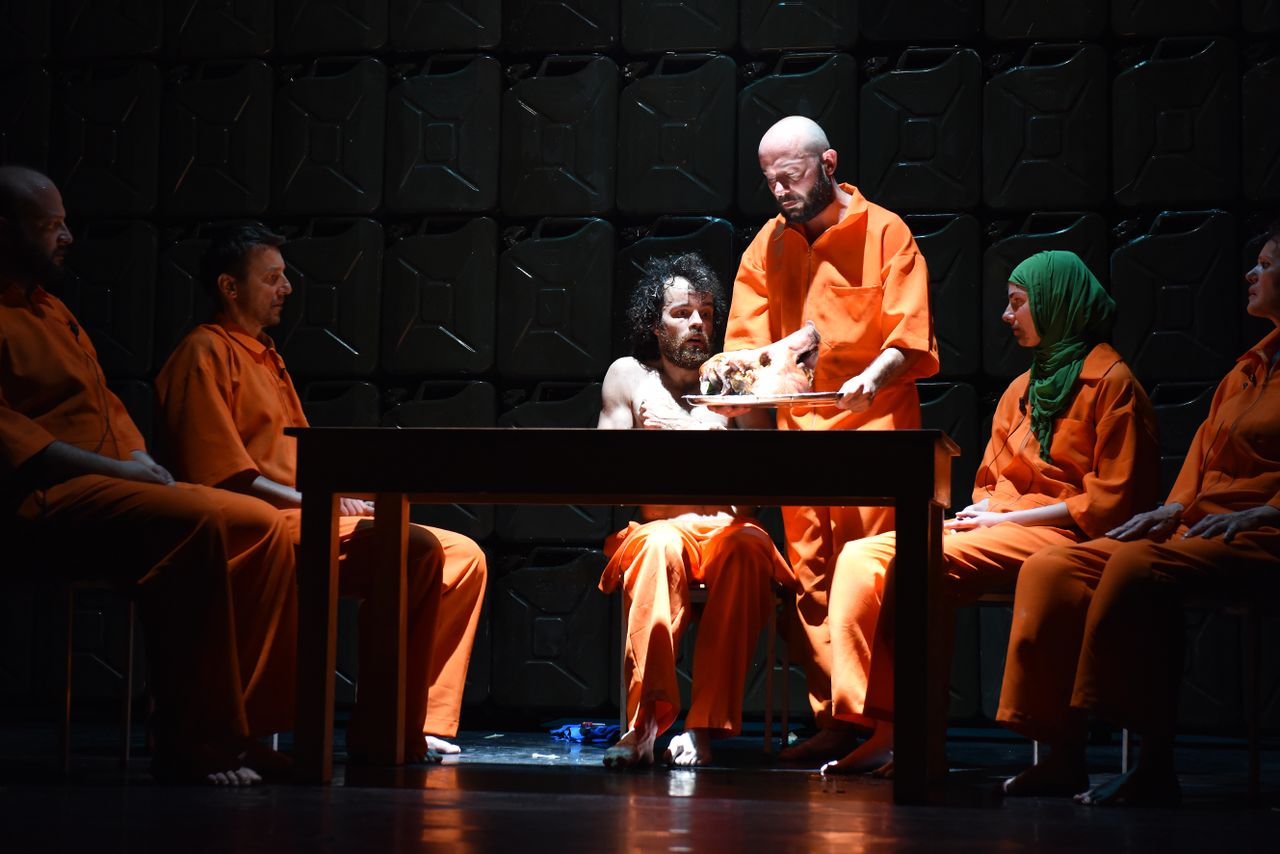



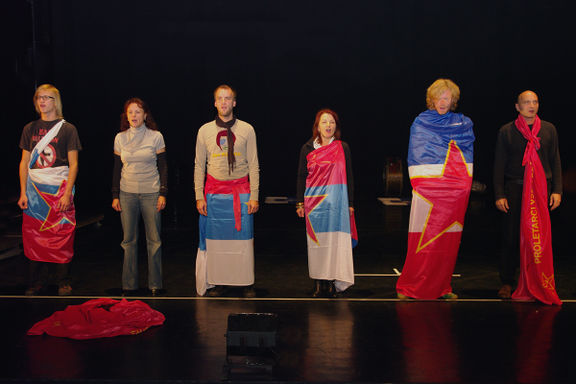
![Still from Pavla Nad Prepadom [Pavla Above the Precipice], a play inspired by the life of mountain climber Pavla Jesih, with the text for the play was written by Andrej E. Skubic. First staged in 2013, the play was featured at Mladinsko Showcase in 2015 (called Prelet at that time).](/images/thumb/f/fc/Mladinsko_Showcase_2013_Pavla_Nad_Prepadom_Photo_Peter_Uhan.jpg/576px-Mladinsko_Showcase_2013_Pavla_Nad_Prepadom_Photo_Peter_Uhan.jpg)
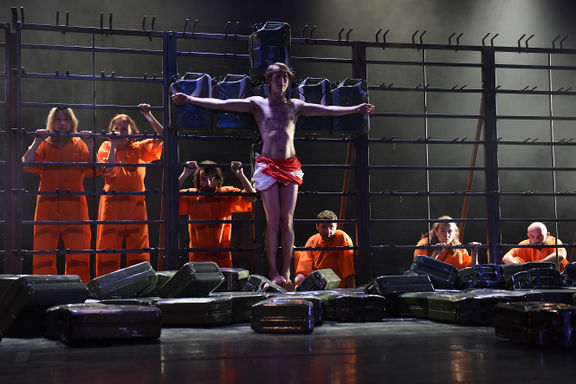
![A still from Republika Slovenija [The Republic of Slovenia], a docudrama about the arms trafficking events from the early years of Slovenia. Shown at Mladinsko Showcase in 2016 and that same year also given the Borštnik Jury Award.](/images/thumb/4/4a/Mladinsko_Showcase_2016_Republika_Slovenija_Photo_Iztok_Dimc.jpg/576px-Mladinsko_Showcase_2016_Republika_Slovenija_Photo_Iztok_Dimc.jpg)
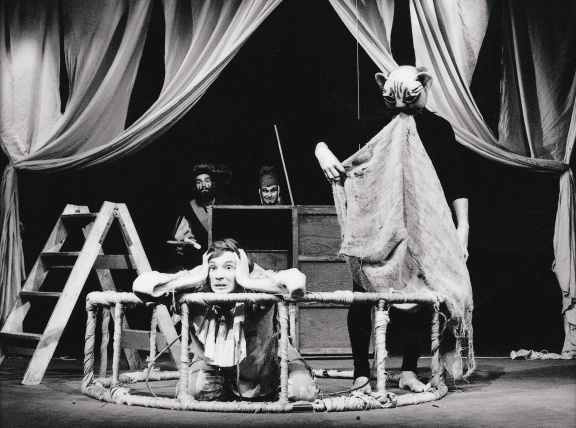
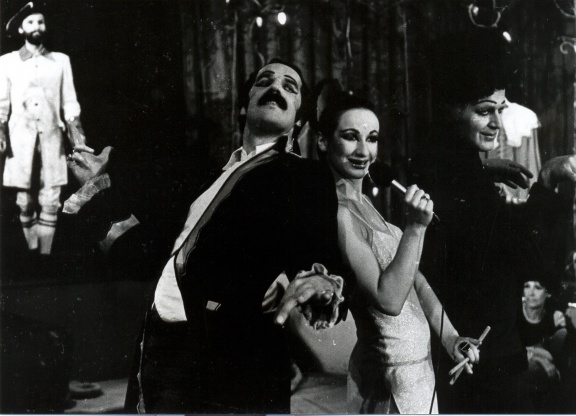
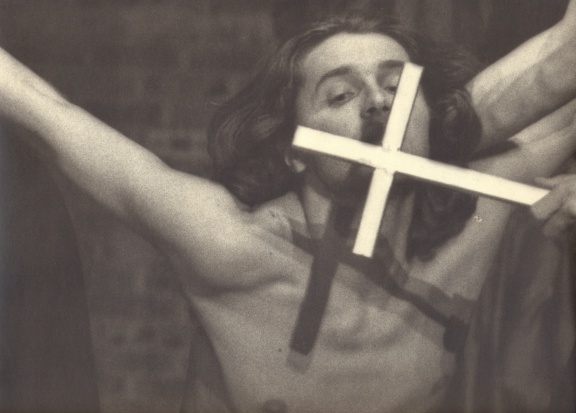
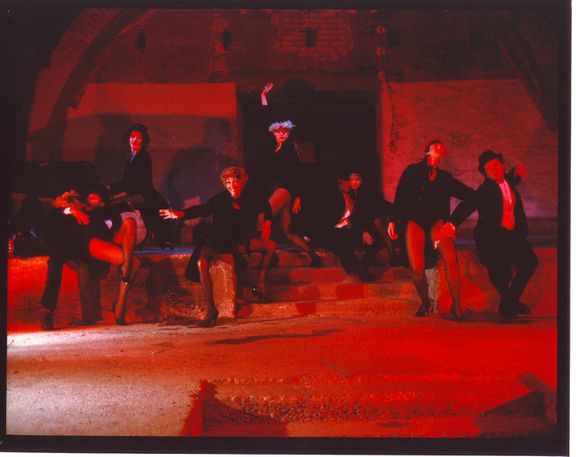
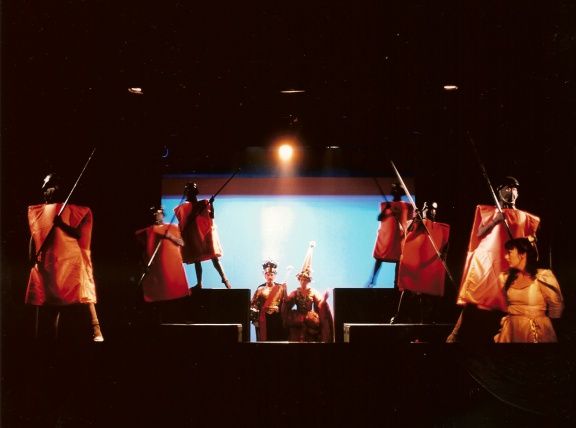
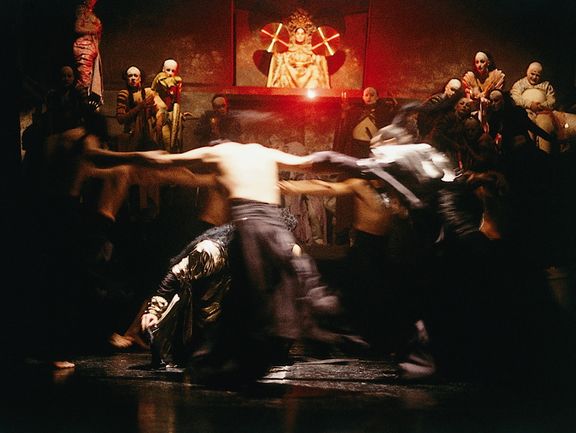
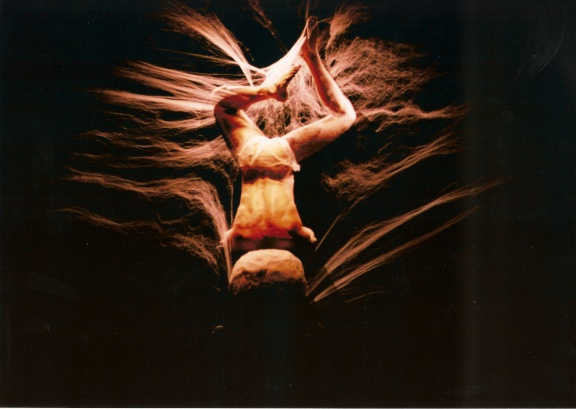
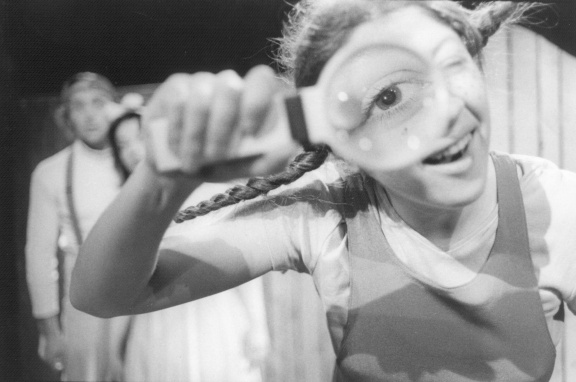
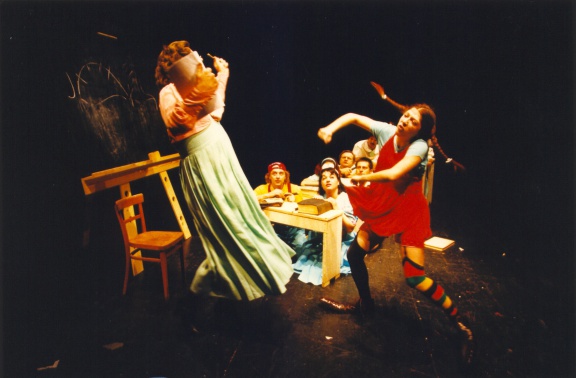
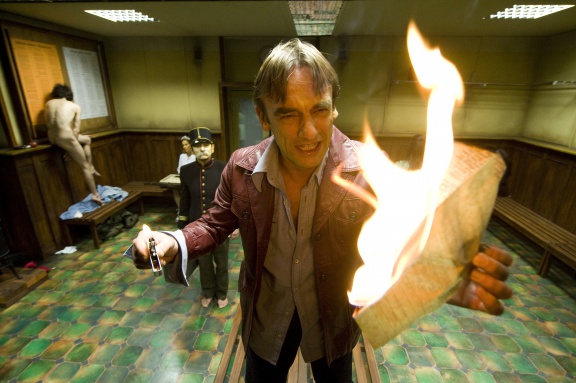
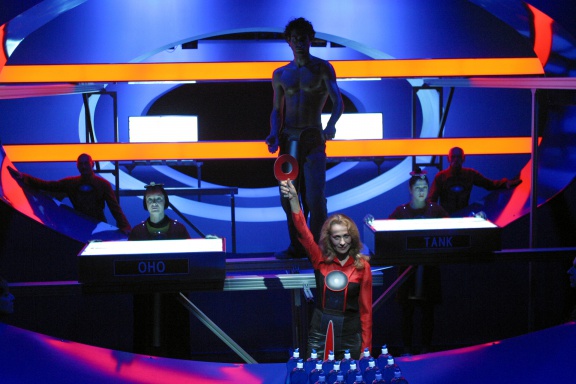
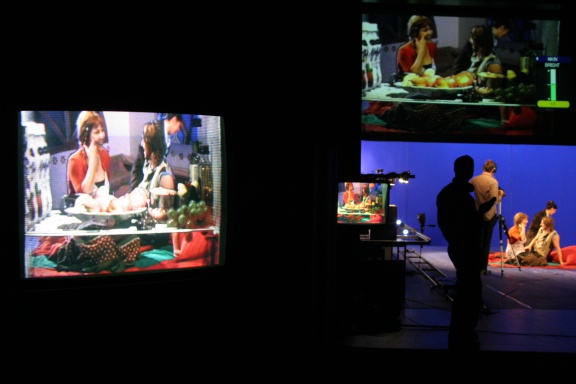
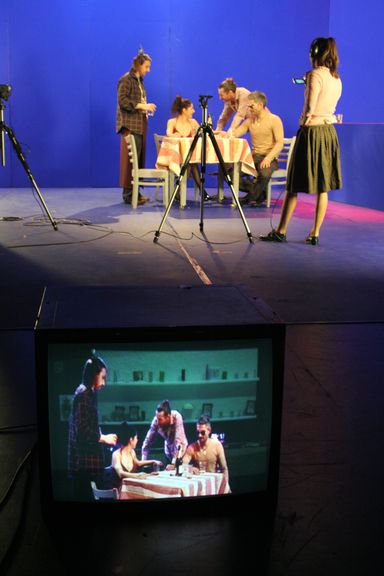
![The Mladinsko Theatre's adaptation of Dostoyevsky's Zločin in kazen [Crime and punishment] was directed by Diego de Brea. With Matija Vastl as Raskolnikov, the show premièred in 2009.](/images/thumb/e/ef/Mladinsko_theatre_2009_Crime_and_punishment_Photo_Ziga_Koritnik.jpg/576px-Mladinsko_theatre_2009_Crime_and_punishment_Photo_Ziga_Koritnik.jpg)
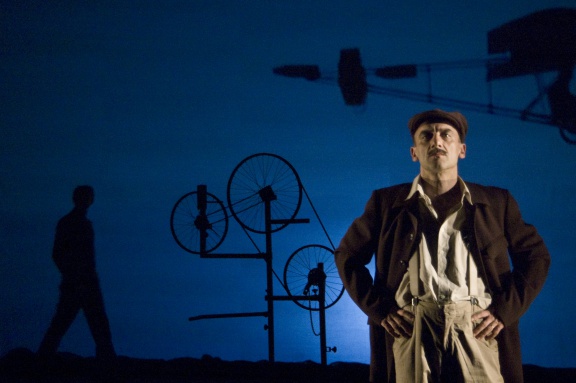
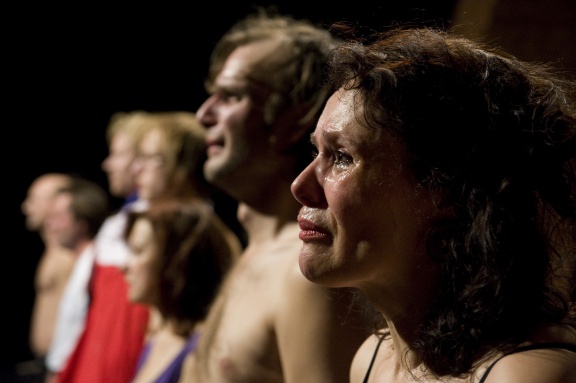
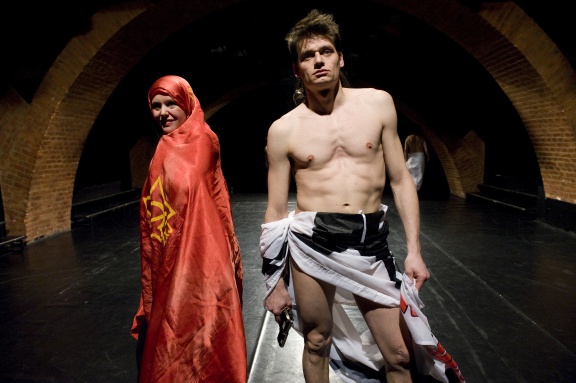
![Sarah Kane's Blasted [Razdejani], directed by Vinko Möderndorfer, Mladinsko Theatre, 2008](/images/thumb/4/44/Mladinsko_Theatre_2010_Razdejani_Photo_%C5%BDiga_Koritnik.jpg/576px-Mladinsko_Theatre_2010_Razdejani_Photo_%C5%BDiga_Koritnik.jpg)
